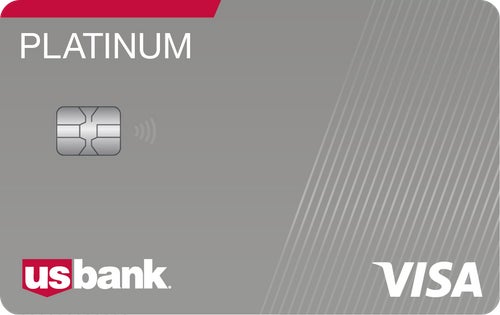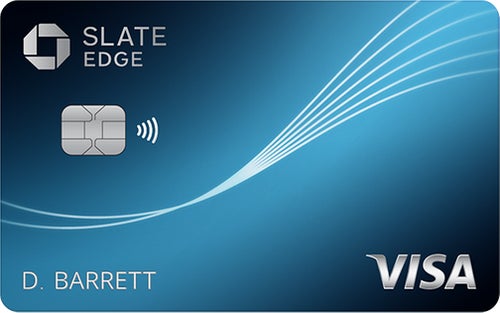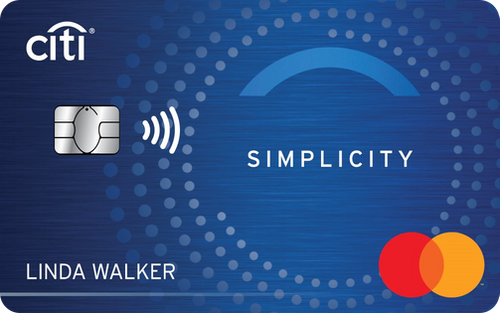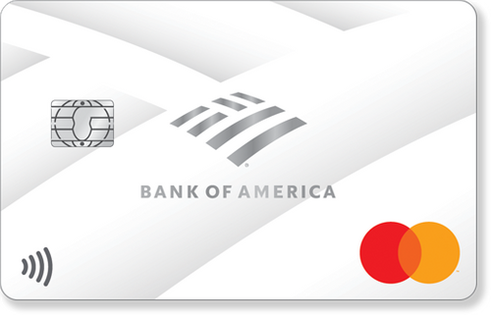Transferring a balance from a high-interest card to one with an 0% introductory APR can be a great way to temporarily prevent interest charges and to give you more flexibility to tackle your debts. As the Fed continues to raise rates to try to address inflation, regular credit card APRs are also going up. That means any balances that aren’t paid in full by the payment date will accrue more interest and get more expensive as the year goes on.
Balance transfer cards typically offer a promotional period ranging from six to 21 months. During that time, you can enjoy no interest on your transferred balance as long as you make your minimum payments on time. There’s usually an initial balance transfer fee associated with these cards, but the transaction cost is typically way less than you would incur in interest charges over time.
In this article
 \n ","topic":"","ttag":"","searchDim":"article-body|listicle|image","variant":"article-body|listicle|image","viewguid":"","event":"listicle|image|1","correlationId":"","_destCat":"https:\/\/oc.brcclx.com\/t\/?lid=26681570&cr=28241&last_updated=1598482871&tid=[subid_value]","productName":"US Bank Visa Platinum","formatType":"IMAGE","location":"LIST","position":1,"sku":"7587","dwLinkTag":"article-body|listicle|image","selector":"#article-body #listicle-477920cd-3217-4319-a92b-86d5646eb942 .itemImage"}}” rel=”noopener nofollow” target=”_blank”>
\n ","topic":"","ttag":"","searchDim":"article-body|listicle|image","variant":"article-body|listicle|image","viewguid":"","event":"listicle|image|1","correlationId":"","_destCat":"https:\/\/oc.brcclx.com\/t\/?lid=26681570&cr=28241&last_updated=1598482871&tid=[subid_value]","productName":"US Bank Visa Platinum","formatType":"IMAGE","location":"LIST","position":1,"sku":"7587","dwLinkTag":"article-body|listicle|image","selector":"#article-body #listicle-477920cd-3217-4319-a92b-86d5646eb942 .itemImage"}}” rel=”noopener nofollow” target=”_blank”>

Intro OfferN/A
APR15.99% – 25.99% (Variable)
Intro Purchase APR0% for 20 billing cycles on purchases
Recommended Credit Good/Excellent
Reward RatesN/A
Annual Fee$0
Intro Balance Transfer APR0% for 20 billing cycles on balance transfers
Balance Transfer APR15.99% – 25.99% (Variable)
Balance Transfer Fee Either 3% of the amount of each transfer or $5 minimum, whichever is greater
Foreign Transaction Fees 2% of each foreign purchase transaction or foreign ATM advance transaction in U.S. Dollars. 3% of each foreign purchase transaction or foreign ATM advance transaction in a Foreign Currency
Our Take
The U.S. Bank Visa Platinum Card offers one of the longest introductory APR periods on the market. Though a handful of cards may have slightly longer introductory APR periods, they also often require higher balance transfer fees or otherwise complicate the process. This is the best option when it comes to making both an inexpensive and convenient balance transfer.
See our full review of the U.S. Bank Visa Platinum Card for more details.
 \n ","topic":"","ttag":"","searchDim":"article-body|listicle|image","variant":"article-body|listicle|image","viewguid":"","event":"listicle|image|2","correlationId":"","_destCat":"https:\/\/www.cnet.com\/personal-finance\/credit-cards\/wells-fargo-reflect-card-review\/","productName":"Wells Fargo Reflect Card","formatType":"IMAGE","location":"LIST","position":2,"sku":"7985","dwLinkTag":"article-body|listicle|image","selector":"#article-body #listicle-4f8e1025-13d5-4f3e-95c7-3f3d3fd05274 .itemImage"}}” rel=”noopener nofollow” target=”_blank”>
\n ","topic":"","ttag":"","searchDim":"article-body|listicle|image","variant":"article-body|listicle|image","viewguid":"","event":"listicle|image|2","correlationId":"","_destCat":"https:\/\/www.cnet.com\/personal-finance\/credit-cards\/wells-fargo-reflect-card-review\/","productName":"Wells Fargo Reflect Card","formatType":"IMAGE","location":"LIST","position":2,"sku":"7985","dwLinkTag":"article-body|listicle|image","selector":"#article-body #listicle-4f8e1025-13d5-4f3e-95c7-3f3d3fd05274 .itemImage"}}” rel=”noopener nofollow” target=”_blank”>

Intro OfferN/A
APR14.49%-26.49% Variable APR
Intro Purchase APR0% intro APR for up to 21 months from account opening
Recommended Credit Excellent, Good
Reward RatesN/A
Annual Fee$0
Intro Balance Transfer APR0% intro APR for up to 21 months from account opening on qualifying balance transfers
Balance Transfer APR14.49%-26.49% Variable APR
Balance Transfer Fee up to 5%; min: $5
Foreign Transaction Fees 3%
Penalty APR None
Our Take
The Wells Fargo Reflect℠ Card offers up to 21 months from account opening of 0% introductory APR — but you’ll have to earn it. The base offer lasts for 18 months from the account opening on purchases and qualifying balance transfers alike. You can qualify for an extension up to three months if you make on-time minimum payments on your account during the introductory and extension period (14.49% to 26.49% variable APR thereafter). Note that you must transfer your balances to this card within 120 days of the account opening to take advantage of this offer.
Check out our full review of the Wells Fargo Reflect℠ Card for more details.
 \n ","topic":"","ttag":"","searchDim":"article-body|listicle|image","variant":"article-body|listicle|image","viewguid":"","event":"listicle|image|3","correlationId":"","_destCat":"https:\/\/oc.brcclx.com\/t\/?lid=26680491&cr=29927&last_updated=1626720765&tid=[subid_value]","productName":"Chase Slate Edge","formatType":"IMAGE","location":"LIST","position":3,"sku":"7884","dwLinkTag":"article-body|listicle|image","selector":"#article-body #listicle-ee5ba5eb-4998-4f87-af08-c281bda64be6 .itemImage"}}” rel=”noopener nofollow” target=”_blank”>
\n ","topic":"","ttag":"","searchDim":"article-body|listicle|image","variant":"article-body|listicle|image","viewguid":"","event":"listicle|image|3","correlationId":"","_destCat":"https:\/\/oc.brcclx.com\/t\/?lid=26680491&cr=29927&last_updated=1626720765&tid=[subid_value]","productName":"Chase Slate Edge","formatType":"IMAGE","location":"LIST","position":3,"sku":"7884","dwLinkTag":"article-body|listicle|image","selector":"#article-body #listicle-ee5ba5eb-4998-4f87-af08-c281bda64be6 .itemImage"}}” rel=”noopener nofollow” target=”_blank”>

Good for balance transfers and lowering your regular APR
Intro OfferN/A
APR15.74% – 24.49% Variable
Intro Purchase APR0% Intro APR on Purchases for 18 months
Recommended Credit Excellent/Good Credit
Reward RatesN/A
Annual Fee$0
Intro Balance Transfer APR0% Intro APR on Balance Transfers for 18 months
Balance Transfer APR15.74% – 24.49% Variable
Balance Transfer Fee Either $5 or 5% of the amount of each transfer, whichever is greater.
Foreign Transaction Fees 3% of each transaction in U.S. dollars
Penalty APR Up to 29.99%
Our Take
The introductory APR for the Chase Slate Edge℠ applies to balance transfers, and you’ll get a unique opportunity to reduce your regular APR over time. Each anniversary year that you spend at least $1,000 on your card and make all your payments on time, you will automatically be considered for an APR reduction by 2% each year. This can continue until your APR reaches the Prime Rate plus 9.74% (currently 13.74% variable based on a prime rate of 4.00%).
So if you think you may need to keep your balance running for longer than the introductory APR period, the Chase Slate Edge will be a good bet. See more details in our full review of the Chase Slate Edge.
 \n ","topic":"","ttag":"","searchDim":"article-body|listicle|image","variant":"article-body|listicle|image","viewguid":"","event":"listicle|image|4","correlationId":"","_destCat":"https:\/\/oc.brcclx.com\/t\/?lid=26671985&cr=28321&last_updated=1598580898&tid=[subid_value]","productName":"Citi Simplicity","formatType":"IMAGE","location":"LIST","position":4,"sku":"6834","dwLinkTag":"article-body|listicle|image","selector":"#article-body #listicle-f41f778a-3d78-4638-9f9f-679634d60ccb .itemImage"}}” rel=”noopener nofollow” target=”_blank”>
\n ","topic":"","ttag":"","searchDim":"article-body|listicle|image","variant":"article-body|listicle|image","viewguid":"","event":"listicle|image|4","correlationId":"","_destCat":"https:\/\/oc.brcclx.com\/t\/?lid=26671985&cr=28321&last_updated=1598580898&tid=[subid_value]","productName":"Citi Simplicity","formatType":"IMAGE","location":"LIST","position":4,"sku":"6834","dwLinkTag":"article-body|listicle|image","selector":"#article-body #listicle-f41f778a-3d78-4638-9f9f-679634d60ccb .itemImage"}}” rel=”noopener nofollow” target=”_blank”>

Longest intro APR with no late fee
Intro OfferN/A
APR16.24% – 26.24% (Variable)
Intro Purchase APR0% for 12 months on Purchases
Recommended Credit Excellent, Good
Reward RatesN/A
Annual Fee$0
Intro Balance Transfer APR0% for 21 months on Balance Transfers
Balance Transfer APR16.24% – 26.24% (Variable)
Balance Transfer Fee Balance transfer fee applies with this offer 5% of each balance transfer; $5 minimum
Late Payment Fee No Late Fees
Foreign Transaction Fees 3%
Our Take
The Citi Simplicity card has one of the longest available balance transfer periods. But the balance transfer fee is 5% ($5 minimum). This is a particularly high balance transfer fee — usually they come in at about 3% of the transaction. But there’s a trade-off. This balance transfer card has no late fee or penalty APR. If there’s any chance that you could miss a payment at some point, the Simplicity could save you up to $40 and won’t forfeit the introductory APR.
You also have a long time to make a credit card balance transfer with the introductory APR — at four months from when you open the account.
 \n ","topic":"","ttag":"","searchDim":"article-body|listicle|image","variant":"article-body|listicle|image","viewguid":"","event":"listicle|image|5","correlationId":"","_destCat":"https:\/\/www.bankofamerica.com\/credit-cards\/products\/bankamericard-credit-card\/","productName":"Bank of America BankAmericard","formatType":"IMAGE","location":"LIST","position":5,"sku":"6544","dwLinkTag":"article-body|listicle|image","selector":"#article-body #listicle-779c5363-900c-40c3-969c-96578f458df8 .itemImage"}}” rel=”noopener nofollow” target=”_blank”>
\n ","topic":"","ttag":"","searchDim":"article-body|listicle|image","variant":"article-body|listicle|image","viewguid":"","event":"listicle|image|5","correlationId":"","_destCat":"https:\/\/www.bankofamerica.com\/credit-cards\/products\/bankamericard-credit-card\/","productName":"Bank of America BankAmericard","formatType":"IMAGE","location":"LIST","position":5,"sku":"6544","dwLinkTag":"article-body|listicle|image","selector":"#article-body #listicle-779c5363-900c-40c3-969c-96578f458df8 .itemImage"}}” rel=”noopener nofollow” target=”_blank”>

Best balance transfer card with a welcome bonus
Intro Offer$100 statement credit online bonus after making at least $1,000 in purchases in the first 90 days of account opening.
APRSee Terms
Intro Purchase APRSee Terms
Recommended Credit Excellent/Good
Reward RatesN/A
Annual Fee$0
Intro Balance Transfer APRSee Terms
Balance Transfer APRSee Terms
Balance Transfer Fee Either $10 or 3% of the amount of each transaction, whichever is greater.
Late Payment Fee See Terms
Foreign Transaction Fees 3%
Penalty APR none
Our Take
This online only offer may not be available if you leave this page or if you visit a Bank of America financial center. You can take advantage of this offer when you apply now.
Most balance transfer cards don’t offer a welcome bonus, but the BankAmericard® credit card bucks that trend. While your transferred balance won’t count toward the spending threshold to unlock the welcome bonus, you can use some of your credit line to earn the welcome bonus, since the introductory APR applies to purchases, as well.
To take advantage of the balance transfer offer, you’ll have to transfer your balance within 60 days of account opening, and you’ll be subject to a 3% balance transfer fee ($10 minimum).
How to choose a balance transfer credit card
Choosing the best balance transfer credit card depends largely on how much money you owe and how quickly you can pay it off. The best balance transfer cards will provide you with a good opportunity to pay off the credit card balance by the end of the introductory APR period, which can have a big impact on raising or maintaining a good credit score.
You’ll need to do some math to use a balance transfer credit card effectively. Paying close attention to the transfer fee, balance requirements, annual fee, intro APR period and the variable APR thereafter could save you hundreds or thousands of dollars.
Some banks have recently shortened or eliminated their introductory low-APR periods for balance transfers due to economic uncertainty, but there are still plenty of good options. Each balance transfer offer is different — be sure to examine the terms of each potential card and card issuer carefully before applying for a new credit card.
When choosing the best balance transfer credit card, there are a few things you should keep in mind:
- Welcome bonuses or cash rewards are mostly a distraction from the cards’ primary purpose, which is giving you a low intro APR period to pay down your balance.
- Some balance transfer cards may charge an annual fee, although none of our current best picks do.
- You can’t transfer balances between different cards from the same credit card issuer (for example, you can’t transfer a Citi balance to another Citi card).
- The maximum credit card balance you can transfer to a new card will depend on several factors, including your credit utilization ratio, the qualifying balance transfer, your minimum payment and your credit rating. Each credit card and credit card issuer is different, and each factor will be determined by the card issuer after assessing your creditworthiness.
What are alternatives to balance transfer credit cards?
While balance transfer credit cards are a quick and easy way to consolidate debt, they’re not your only option. Personal loans or debt consolidation loans can combine debt from multiple sources and provide you with a single lender and one monthly payment.
Your choice will depend on how much you owe, how soon you can pay it back and what sort of payment plan you prefer. If you have reasonably low credit card debt and expect to pay off your balance easily in the intro APR period, a balance transfer card with low or no balance transfer fees could be a good idea.
If you have larger credit card debt or are less sure about your ability to repay it during the low intro APR period, a debt consolidation loan may make more sense. While such loans can include fees, they’ll generally let you transfer more debt, while providing a fixed rate that’s lower than credit card variable rates. You can also include other debt such as medical bills within the same loan.
Debt consolidation loans can make it easier to budget by giving you a consistent monthly payment for the length of the loan, usually two to five years. Be sure that you can afford the monthly payment, however, as late fees will accrue and negatively affect your credit score.
The approval process for loans will be longer than credit cards, although they offer more options for borrowers with poor credit. All of the best balance transfer credit cards listed above require good or excellent credit. While not easy, it’s possible for borrowers with low credit scores to qualify for debt consolidation loans, though they’ll likely have to pay higher interest rates.
Will using a balance transfer credit card affect my credit rating?
Applying for any new credit card will usually affect your credit rating a little. Each credit card application requires a hard inquiry (also called a “hard pull”) of your credit rating, which could lower your credit score a few points, though the damage usually disappears before the inquiry is removed from your credit report in two years.
You’ll want to avoid several hard inquiries within a short period, which could indicate to lenders that you are low on cash or a high-risk customer. Your best bet is to find the one credit card you want and determine if your credit rating is good enough for it. A soft inquiry (or “soft pull”) of your credit rating will not impact your score and will keep you informed of your rating and credit options. You can check your approval odds via a soft pull with the best preapproval credit cards.
A new credit card will also shorten the average age of your accounts, which can negatively affect your credit score. Credit reporting company Experian recommends keeping older credit card accounts open to cushion the impact of a new card.
On the other hand, consolidating debt with a balance transfer credit card can reduce your credit utilization ratio — your debt divided by your credit limit — which will improve your credit score. Experts suggest keeping your ratio below 30%.
Finally, using a balance transfer card to pay off credit card debt within the introductory APR period should have a significant positive impact on your credit score. Along with improving your credit utilization, you’ll also simply owe less money overall. The amount of money you owe accounts for 30% of your FICO score.
Overall, how a balance transfer credit card affects your credit rating will depend on what you do with it. If you’re shifting money from card to card repeatedly, your score will be hurt. If you’re paying off significant debt, that should improve your score much more than the small negative impacts of the hard pull and reduced average age of your accounts.
Glossary of terms
Introductory APR: The interest rate that’s applied toward your balance transfer amount and any purchases during an initial period of card ownership (usually 12 to 21 months).
Standard APR: The interest rate applied toward balances and purchases after the introductory period ends.
Introductory balance transfer fee: The fee charged on balance transfers during the initial period of card ownership.
Standard balance transfer fee: The fee charged on balance transfers after the introductory period ends.
Credit utilization ratio: The amount of your aggregate credit card balances divided by your credit limit across all cards.
Qualifying balance transfer: The amount of credit card debt that an issuer will allow you to transfer to a new card.
FAQs
How do balance transfer credit cards work?
A balance transfer is when you take the debt, or balance, that you owe on one card account and transfer it to another credit card account. While many credit cards allow balance transfers, those primarily designed for the purpose offer an introductory 0% APR period on balances transferred to that account, typically applicable to transfers made within the first 60 to 120 days of card ownership.
The introductory APR period generally lasts between 12 months and 21 months, giving you a significant period of time to pay off your balance interest-free. You typically have to make all of your minimum payments on time to maintain the promotional interest rate, and there is usually a 3% to 5% balance transfer fee.
If I still have a balance after the introductory APR period is over, can I just keep transferring my debt to a new balance transfer card?
Technically, yes. In some cases, transferring your balance two or three times might even be what’s necessary to finally pay off your debt. But unless you have a firm understanding of how you got into debt in the first place and a plan for getting out of debt, you won’t be working toward a solution.
While transferring your remaining debt to a second balance transfer card may allow you to pay off your balance without monthly interest or a fee, it’s important to note that there are too many variables for multiple balance transfers to be a failure-proof debt strategy. For example, your card application could be denied, your credit limit could be much lower than you anticipated or your transfer request could be denied. Credit card offers could also change, making it difficult to plan ahead. That’s why it’s recommended to select a card that allows you to pay off the full balance after one cycle if possible.
What’s the maximum balance I can transfer to a new credit card?
The balance transfer limit is determined by the card issuer on an individual basis. Some cards may take into account your creditworthiness and account history (if applicable) when determining this amount.
The same goes for determining your credit limit. The card issuer will take into account factors like your credit score, credit utilization, income and housing payments when establishing your credit limit. Remember that the credit limit may be less than you expected and therefore less than your current outstanding balance. To successfully raise your limit, you usually need an adjustment in your financial situation, like increased income or lower housing payment, or an extended period of paying your bills on time, which obviously isn’t a great option if you’re qualifying for a balance transfer to take advantage of an introductory 0% APR period.
What is an introductory APR?
The introductory APR is the APR applied toward your balance (including balance transfers and purchases in most cases) for the first six to 21 months of card ownership, depending on the card. The standard APR is the APR applied toward your balance after the introductory period ends. The penalty APR is applied toward your balance if you miss more than one payment in six months, usually, but depends on the individual card and your card issuer.
What is an introductory balance transfer fee?
An introductory balance transfer fee is a reduced or $0 fee charged for transfers made during an initial promotional period when you open the account, usually for the first 30 to 120 days of card ownership. Not all balance transfer cards offer an introductory balance transfer fee, but the ones that do can save you an average of 3% of your balance. However, many of these cards do not offer an introductory APR. See our list of the best credit cards with no balance transfer fees for more information.
How long will it take to complete a balance transfer?
It may take anywhere between 10 days and six weeks to complete a balance transfer, after receiving your new card and cardholder agreement. It’s also important to note that some card issuers, such as Citi, make balance transfers available at their discretion, and could therefore decline a transfer request. And you should probably still pay the minimum on the old card’s balance until you’ve confirmed that the transfer was completed, so you don’t run the risk of fees or penalties.
Who can qualify for a balance transfer credit card?
In order to qualify for a top-rated balance transfer credit card, you’ll need good credit. All of the cards recommended above require good to excellent credit scores, meaning FICO scores of 670 to 850.
If your credit score is lower than 670, you might be able to qualify for another balance transfer credit card, but you’ll likely have to pay for it with higher balance transfer fees, lower transfer limits and/or a shorter intro APR period.
What do I do if I have subpar credit?
If your credit score is lower than 670 and you’ve been unsuccessful securing one of the cards above, consider alternative methods for refinancing your debt. You can call your current card issuer and try to negotiate a lower APR. You could also explore a debt consolidation loan, which would allow you to gather all of your debt under a new, lower APR.
What are the pros and cons of balance transfer credit cards?
Pros
- Save money by temporarily reducing or eliminating credit card interest
- Reduce your credit utilization ratio and the amount of money you owe
- Consolidate debts from multiple credit cards into one account
- Possibly lower monthly payments due to temporary break on interest
Cons
- High credit score (good or excellent) needed to qualify
- Potentially higher interest rates after the intro APR period expires
- Limits on how much credit card debt you can transfer
- Less attractive rewards and bonuses than other credit cards
Can I use a balance transfer credit card to buy things?
While a balance transfer credit card certainly works like a normal credit card, it’s generally not a good idea to use it to make new purchases. If you currently have credit card debt, your primary goal should be to get out of debt and avoid paying interest. When you purchase something and add new charges to your balance transfer account, you’re moving in the wrong direction, especially if you’re only able to make the minimum payment.
A debit card or cash is better for any new purchases while you pay off your debt, thus leaving your balance transfer account only for debt repayment. This will also help you track your progress more clearly. And keep in mind that some balance transfer credit cards still charge interest on new purchases until you pay off the entire balance (the new purchases plus whatever balance you transferred), which will only compound your debt problem.
Our approach to credit card evaluation
CNET reviews credit cards by exhaustively comparing them across set criteria developed for each major category of cards, including cash-back, welcome bonus, travel rewards and balance transfer. We consider the typical spending behaviors of a range of consumer profiles with the understanding that everyone’s financial situation is different — as are the designated functions of different credit cards.
For balance transfer credit cards, we analyze specs such as the duration of the introductory 0% APR period and the balance transfer fee, while also considering factors such as the standard APR and the length of time you have to make a balance transfer after you open the account. The length of the intro APR period and the balance transfer fee are the two primary factors that have the biggest impact on the overall cost of paying off debt with a balance transfer credit card.
List of cards researched
- Amex EveryDay® Credit Card
- Chase Slate
- Citi Simplicity® Card
- Citi® Double Cash Card
- U.S. Bank Visa® Platinum Card
- Discover it® Balance Transfer
- Amex EveryDay® Preferred Credit Card
- BankAmericard® Credit Card for Students
- Citi Rewards+® Card
- Chase Freedom Flex℠
- Chase Freedom Unlimited®
- BankAmericard® credit card
- Simmons Visa®
- SunTrust Prime Rewards Credit Card
- Indigo® Platinum Mastercard®
- Milestone® Gold Mastercard®
- Applied Bank Secured Visa® Gold Preferred® Credit Card
- Surge Mastercard® Credit Card
- OpenSky® Secured Visa® Credit Card
- Green Dot Primor Secured
- Fit Mastercard® Credit Card
- Reflex Mastercard® Credit Card
More personal finance advice
The editorial content on this page is based solely on objective, independent assessments by our writers and is not influenced by advertising or partnerships. It has not been provided or commissioned by any third party. However, we may receive compensation when you click on links to products or services offered by our partners.


